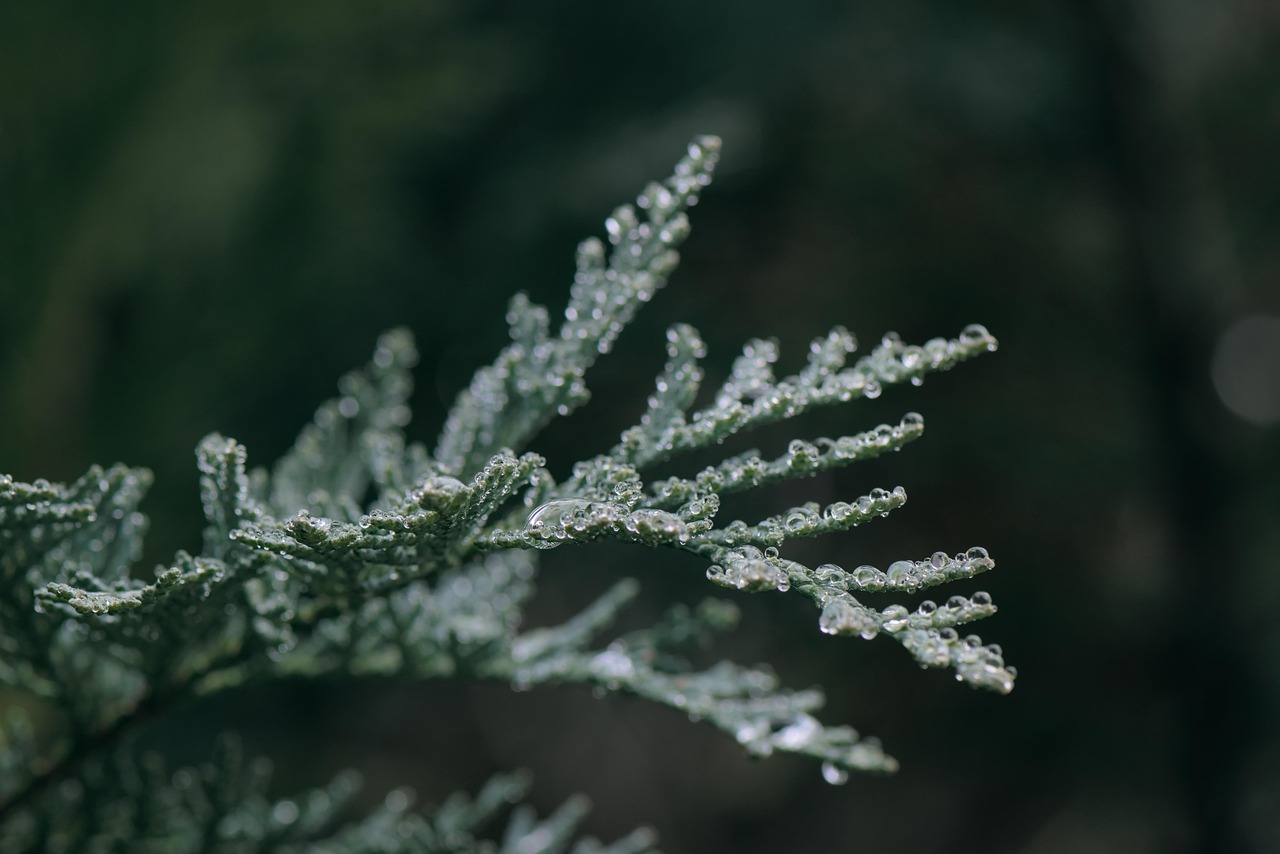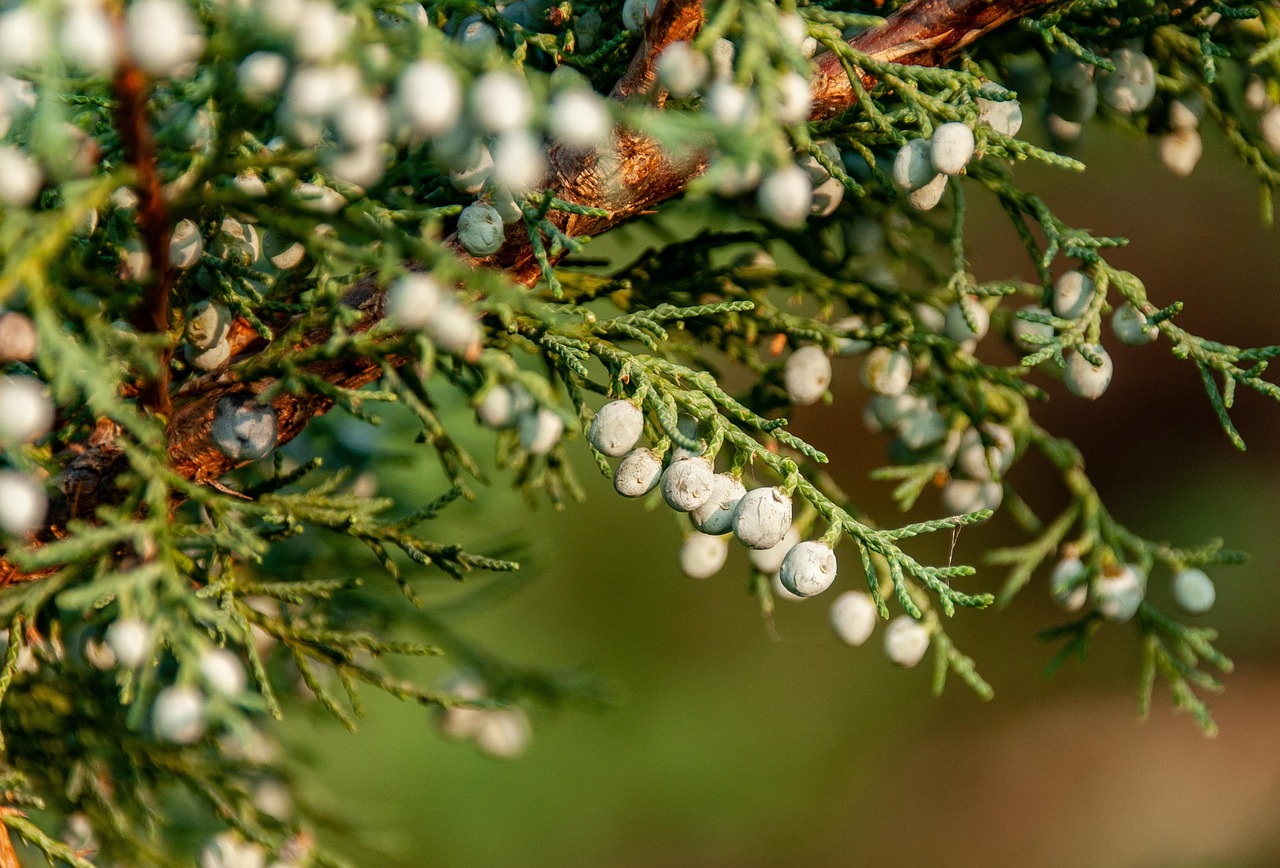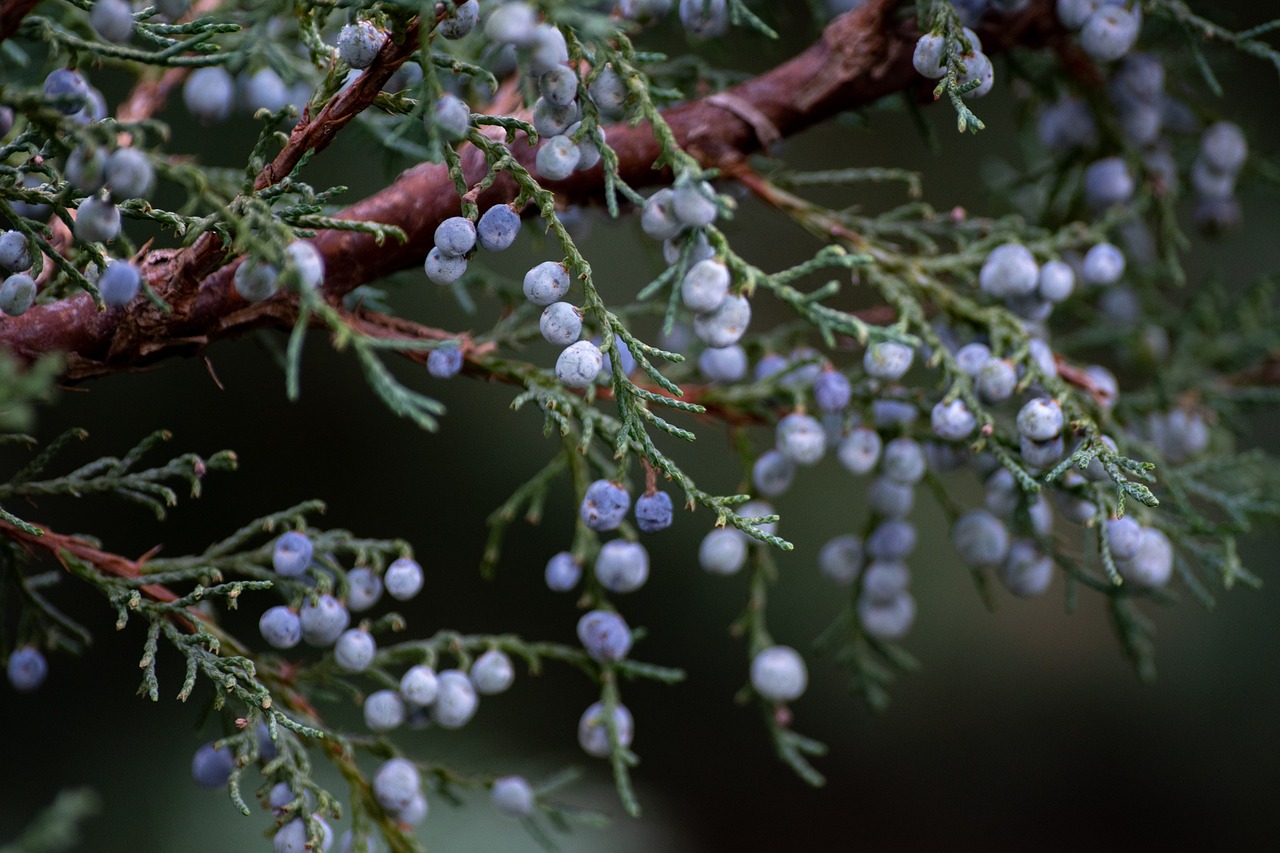Pruning juniper trees effectively promotes dense ground cover by encouraging healthy growth and shaping the plant. Proper techniques involve timing, cutting back overgrown branches, and maintaining an ideal shape to enhance visual appeal and coverage.
Juniper trees are popular choices for landscaping due to their resilience and adaptability. They provide excellent ground cover, preventing soil erosion and suppressing weeds. However, achieving a lush, dense appearance requires regular pruning. The right pruning techniques can significantly enhance the health and aesthetics of your juniper plants.

Understanding the growth habits of junipers is essential for effective pruning. These evergreen shrubs or trees can vary in size and form, from low-growing ground covers to taller specimens. Their growth patterns often influence how and when to prune. For instance, some varieties may spread widely, while others grow upright.
Benefits of Pruning Juniper Trees
Pruning juniper trees offers several benefits that contribute to a healthier landscape. Regular maintenance not only promotes dense ground cover but also encourages new growth. Below are some key advantages of pruning:
- Improved air circulation and light penetration.
- Enhanced aesthetic appeal through controlled shape and size.
- Increased resistance to pests and diseases.
- Encouragement of denser foliage for better ground cover.
Proper pruning also allows gardeners to manage the size and spread of juniper trees, ensuring they fit well within the overall landscape design. When pruned correctly, these trees can thrive, providing vibrant greenery throughout the seasons.

When to Prune Juniper Trees
The timing of pruning is crucial for achieving optimal results. The best time to prune junipers is typically in late winter or early spring, just before new growth begins. This timing allows you to remove any dead or damaged branches while minimizing stress on the plant.
Pruning in the fall is generally discouraged as it can lead to winter damage. Additionally, pruning during the growing season can interrupt the plant’s natural growth cycle. Understanding seasonal changes is vital for successful juniper care.
Pruning Techniques for Dense Ground Cover
To promote a dense ground cover, specific pruning techniques should be employed. Here are some effective methods:

- Thinning: This involves selectively removing some branches to improve air circulation and light access without changing the overall shape significantly.
- Shearing: For a uniform look, shearing can be done, especially on lower-growing varieties. This technique involves trimming the outer branches evenly.
- Cutting Back: If junipers become too overgrown, cutting back stems to a lateral branch helps rejuvenate the plant and encourages dense growth.
It’s essential to use sharp, clean tools when pruning to make precise cuts. This reduces the risk of infection and promotes quicker healing for the tree. Always make cuts at a slight angle to prevent water from gathering on top of the cut surface.
Tools Needed for Pruning Junipers
Having the right tools can make the pruning process more efficient and effective. Below is a list of essential tools you should consider:
| Tool | Purpose |
|---|---|
| Pruning Shears | Ideal for small branches and precise cuts. |
| Loppers | Useful for cutting thicker branches that pruning shears cannot handle. |
| Saw | Necessary for larger branches that require more force. |
| Gloves | Protects hands from sharp needles and thorns. |
| Anchor Tape | Helps secure loose branches temporarily during pruning. |
Using these tools properly will aid in achieving a well-maintained appearance for your junipers. Regular maintenance will not only improve their health but also enhance their contribution to your landscape design.

In summary, understanding when and how to prune juniper trees is key to promoting dense ground cover. By employing appropriate techniques and using the right tools, you can ensure your junipers remain healthy and visually appealing throughout the year. The next step involves learning about specific varieties of junipers and their individual care requirements.
Understanding Juniper Varieties
Juniper trees come in various species and cultivars, each with unique characteristics and growth habits. Knowing which type of juniper you have is essential for effective pruning and maintenance. Different varieties may require different approaches to achieve dense ground cover.
Here are some common juniper varieties:
- Juniperus horizontalis: Also known as creeping juniper, this variety is low-growing and ideal for ground cover. It spreads quickly, creating a dense mat.
- Juniperus chinensis: Chinese juniper is versatile and can be found in various forms, from upright shrubs to ground covers. Its dense foliage makes it an excellent choice for hedges.
- Juniperus sabina: Commonly known as savin juniper, this shrub has a broad spreading habit and is often used in rock gardens or as ground cover.
- Juniperus scopulorum: This Rocky Mountain juniper is taller and more upright. It can be pruned to maintain shape and control height.
Each variety has its growth pattern, which influences how you should prune them. For instance, creeping junipers benefit from occasional shearing to maintain a compact appearance, while upright varieties might require thinning to keep them from becoming too dense.
Pruning Techniques by Variety
Different juniper varieties respond better to specific pruning techniques. Understanding these can help you achieve optimal results when pruning for dense ground cover.
Creeping Junipers
Creeping junipers require light pruning to maintain their spreading habit. Here are some techniques:
- Shearing: Use pruning shears to trim back the tips of the stems. This encourages lateral growth and helps create a fuller appearance.
- Selective Thinning: Identify and remove any dead or weak branches to improve air circulation and overall health.
Upright Junipers
For taller junipers like Juniperus chinensis and Juniperus scopulorum, consider the following techniques:
- Thinning Cuts: Remove entire branches at their base to reduce density without sacrificing the tree’s natural shape.
- Heading Back: Cut back the tips of branches if they become too long. This encourages bushier growth.
The Importance of Proper Pruning Techniques
Using the right pruning techniques ensures that your junipers remain healthy and attractive. Proper methods help avoid damaging the plant and promote vigorous growth. Below are some critical points to keep in mind:
- Avoid Over-Pruning: Removing too much foliage can stress the plant. Always prune conservatively, especially during the growing season.
- Make Clean Cuts: Use sharp tools to make clean cuts. This prevents jagged edges that could invite pests or disease.
- Know When to Stop: Regularly step back to assess your work. It’s easy to get carried away; maintaining the natural shape is essential.
Pest and Disease Management
Pruning also serves as a preventive measure against pests and diseases that may affect junipers. A well-pruned tree is less susceptible to issues like blight or insect infestations. Here are some common pests and diseases to watch out for:
| Pest/Disease | Description</th |
|---|---|
| Cedar-Apple Rust | A fungal disease that can cause yellow spots on leaves and requires good air circulation to prevent. |
| Spider Mites | Tiny pests that suck sap from leaves, leading to discoloration. Regular pruning can help manage populations. |
| Scale Insects | These insects attach themselves to branches and leaves, draining nutrients. A vigorous pruning routine can reduce their presence. |
Monitoring your junipers regularly will help catch any signs of pest or disease early. Pruning can assist in maintaining plant vigor, making them less attractive to potential threats.
Aftercare Post-Pruning
The work doesn’t stop once you finish pruning your junipers. Proper aftercare is essential for recovery and continued health:
- Watering: Ensure your plants receive adequate water after pruning. This helps reduce stress and promotes new growth.
- Mulching: Apply a layer of mulch around the base of the plants to conserve moisture and suppress weeds.
- Fertilizing: Consider applying a balanced fertilizer after pruning to support new growth.
Caring for your junipers following pruning will help them bounce back quickly and continue providing dense ground cover in your landscape design.
Common Mistakes in Juniper Pruning
Pruning junipers can be a straightforward task, but several common mistakes can hinder their growth and health. Being aware of these pitfalls will help you achieve the desired dense ground cover without harming the plants.
- Pruning at the Wrong Time: As mentioned earlier, pruning during the wrong season can stress your plants. Avoid pruning in fall or late summer when the plants are preparing for dormancy.
- Over-Pruning: Removing too much foliage can leave the plant vulnerable and less appealing. It’s important to prune conservatively to maintain adequate foliage for photosynthesis.
- Neglecting Tool Maintenance: Using dull or dirty tools can cause jagged cuts and potentially introduce diseases. Always ensure your tools are clean and sharp before starting.
- Ignoring Plant Health: Pruning should not be done if the plant is already stressed from drought or disease. Ensure your junipers are healthy before initiating a pruning regimen.
Creating a Pruning Schedule
Establishing a routine pruning schedule is crucial for maintaining the health and appearance of your junipers. A well-planned schedule helps you stay organized and ensures that your plants receive consistent care.
Annual Pruning Tasks
Here are some recommended tasks to include in your annual pruning schedule:
- Winter Pruning: Conduct a thorough inspection and light pruning during late winter. Remove any dead or damaged branches.
- Spring Check-Up: After the last frost, check for new growth and make adjustments if necessary.
- Summer Maintenance: During the growing season, monitor growth and perform light shearing as needed to maintain shape.
- Fall Preparation: In early fall, assess the overall health of your plants and prepare them for winter by removing any weak branches.
Documenting your pruning activities can help you track what works best for your specific juniper varieties. This information will aid in optimizing future pruning efforts.
Environmental Factors Impacting Juniper Growth
Several environmental factors can influence the growth and health of junipers. Being aware of these factors will help you make informed decisions regarding pruning and care.
Soil Quality
The soil type and quality play a significant role in how well your junipers grow. Here are some considerations:
- Drainage: Junipers prefer well-draining soil. Poor drainage can lead to root rot and other health issues.
- Nutrient Content: Test your soil for nutrient levels. A balanced supply of nitrogen, phosphorus, and potassium is essential for healthy growth.
- pH Levels: Ideally, junipers thrive in slightly acidic to neutral soil (pH 6.0-7.0). Regular soil testing can help maintain optimal pH levels.
Climate Considerations
The climate influences not only how and when you prune but also the overall health of your junipers. Here are some factors to keep in mind:
- Temperature Extremes: Junipers are generally hardy but may struggle in extreme temperatures. Protect them during severe winters or summer heatwaves.
- Moisture Levels: Consistent moisture is vital. Be mindful of your local rainfall patterns and provide supplemental watering during dry spells.
- Sunlight Exposure: Junipers thrive in full sun but may require some shelter in extremely hot climates. Positioning them properly can enhance growth.
Pest Control Strategies
A proactive approach to pest control will help maintain healthy junipers. Here are effective strategies to manage pests:
- Regular Inspections: Frequently check your junipers for any signs of pests or disease. Early detection is key to effective management.
- Natural Predators: Encourage beneficial insects like ladybugs and lacewings that prey on harmful pests like aphids and spider mites.
- Insecticidal Soap: Use insecticidal soap as a natural treatment to control soft-bodied insects without harming beneficial species.
- Cultural Practices: Maintaining proper hygiene, such as cleaning up plant debris, can reduce pest habitats and prevent infestations.
A successful pest management strategy will not only protect your junipers but also enhance their ability to thrive, leading to denser ground coverage in your landscape design.
The Role of Mulching in Ground Cover
Mulching is an essential practice that complements pruning and overall care for junipers. Adding mulch around the base of your plants provides numerous benefits:
- Moisture Retention: Mulch helps retain soil moisture, reducing the frequency of watering needed during dry periods.
- Weed Suppression: A layer of mulch can inhibit weed growth, which competes with junipers for nutrients and water.
- Soil Temperature Regulation: Mulch moderates soil temperature, providing a more stable environment for roots during seasonal changes.
- Nutrient Enrichment: Organic mulches decompose over time, adding essential nutrients back into the soil.
Select organic materials like wood chips, bark, or straw for mulching around junipers for maximum benefits. Apply a 2-3 inch layer of mulch while ensuring it does not touch the base of the plant to prevent rot.
Seasonal Care and Maintenance
After pruning and mulching your junipers, it is vital to implement a seasonal care routine. Each season presents unique challenges and opportunities for the growth of your junipers. Here are some seasonal tips to ensure they thrive:
Spring Care
As the weather warms up, your junipers will start to show signs of new growth. Here are important tasks to focus on during spring:
- Fertilization: Apply a balanced fertilizer in early spring to support new growth. Use a slow-release formula for the best results.
- Watering: Ensure that the soil remains consistently moist but not soggy. Newly emerging roots need adequate moisture to establish.
- Pest Monitoring: Keep an eye out for any signs of pests. Early detection is crucial for effective management.
Summer Care
Summer can be challenging for junipers, especially in hot climates. Focus on the following tasks:
- Regular Watering: Deep watering is essential during hot months. Water early in the morning or late in the evening to minimize evaporation.
- Weed Control: Continue to monitor for weeds, especially around the base of your junipers. Hand-pulling works well, or you can use mulch to suppress growth.
- Pruning Maintenance: Lightly shear any overly long branches if necessary, but avoid heavy pruning during this time.
Fall Care
As temperatures drop, prepare your junipers for winter:
- Final Watering: Make sure to water deeply before the first hard frost. A well-hydrated plant can better withstand cold temperatures.
- Mulch Refresh: Add a new layer of mulch as needed to maintain insulation and moisture retention through the winter months.
- Pest Inspection: Perform a final check for pests and diseases before winter sets in, ensuring that your plants go into the dormant season healthy.
Winter Care
While junipers are hardy, they still require care during winter:
- Snow Management: If heavy snow accumulates, gently brush it off branches to prevent breakage.
- Wind Protection: In areas prone to harsh winds, consider using burlap screens to provide protection from desiccation.
Common Queries About Juniper Pruning
If you are new to pruning junipers or have encountered challenges, you may have some questions. Here are answers to common queries that can help enhance your understanding:
How Often Should I Prune My Junipers?
The frequency of pruning depends on the growth rate of the specific variety. Generally, a light pruning once a year is sufficient for most junipers. However, more vigorous species may require additional maintenance throughout the growing season.
Can I Prune Junipers into Specific Shapes?
Yes, you can shape junipers through careful pruning. However, certain varieties respond better than others. Upright varieties tend to hold their shape well when pruned, while creeping varieties are better suited for natural forms.
What Should I Do If My Junipers Are Overgrown?
If your junipers have become overgrown, you can perform a rejuvenation pruning. This involves cutting back significant portions of the plant to encourage new growth. Be cautious not to remove more than one-third of the plant at a time to avoid stressing it.
Final Thoughts
Pruning juniper trees for dense ground cover requires thoughtful planning and care. By understanding your specific variety and employing proper techniques, you can significantly enhance their health and aesthetics. Regular maintenance, including seasonal care and pest management, will help your junipers thrive in any landscape.
The benefits of pruning extend beyond mere aesthetics; they contribute to the overall vigor and resilience of these beautiful plants. Armed with knowledge about techniques, tools, and care practices, you can cultivate a vibrant garden featuring lush juniper ground cover that enriches your outdoor space. Embrace the art of pruning and enjoy the beauty that well-maintained junipers bring to your landscape.
